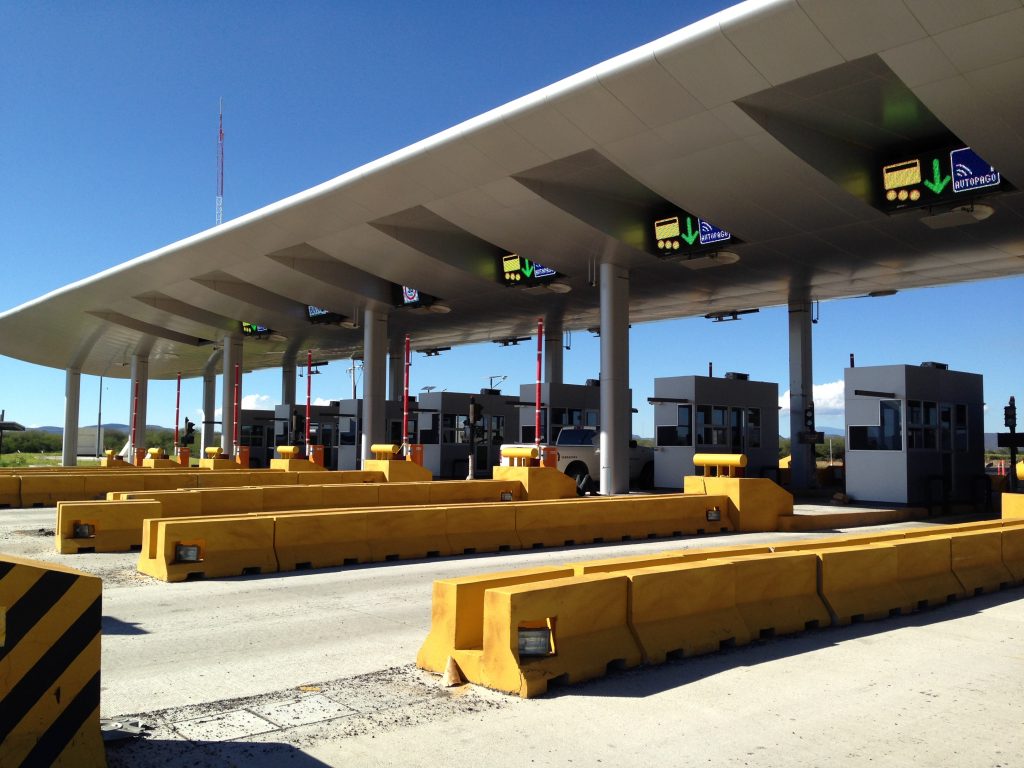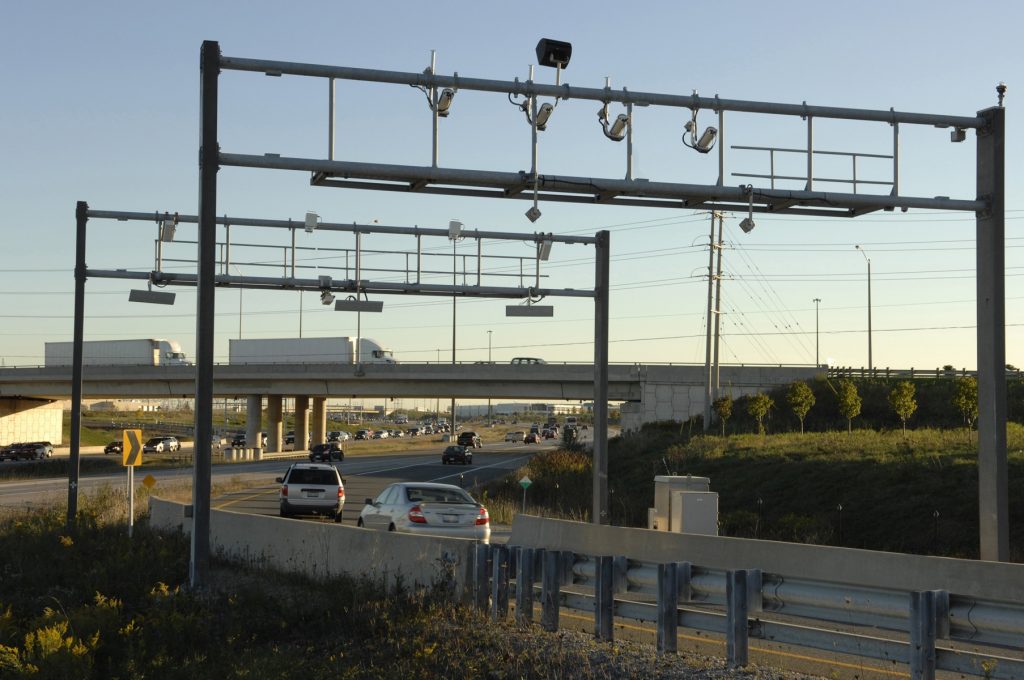All Electronic Tolling: Should Agencies Make the Switch?
By Anthony Sgro
Date
December 10, 2019
Example of a traditional toll plaza in Guadalajara, Mexico.
Thanks to rapidly evolving technology, many industries have experienced significant changes and the tolling industry is no exception. Despite being an unpopular topic for many, tolling can be a crucial resource for funding the construction of new roads and bridges. For many years the concept of tolling was quite simple; drivers would drive up to a toll plaza, hand their money to a toll collector, and drive off.
New technologies have automated this entire process including vehicle detection, identification, and payment. Thanks to All Electronic Toll (AET) technologies, drivers can travel on a toll road without having to stop to pay. Unfortunately, as with many applications of technology, the overall business framework has not been able to keep up with the latest technological advances. Issues related to interoperability, license plate registration, and payment collection are common concerns for AET systems. Yet still, many agencies feel the pressure to adapt and are faced with the burning question: “should we scrap our ‘ancient’ toll plaza for a modern AET system?”
Tolling 101:
Traditional tolling plazas are constructed with gated lanes where drivers must stop and pay their fare to a toll collector or automatic payment machine (APM). Some plazas have introduced equipment in the lane to expedite the process using technology that can detect vehicles and read on board units (OBU). OBU sticker tags or transponders are used to link to a customer account and automatically open the gate and charge the driver’s account as they travel through the lane.

Example of AET in Toronto, Canada. Source: 407ETR
AET solutions operate differently than traditional tolling, it eliminates the toll plaza at a single location and introduces tolling points at various segments along the roadway and entrance / exit ramps. These tolling points are outfitted with scanners, in-pavement loops, sensors, and cameras to detect and identify vehicles as they enter and exit a road segment. Drivers will see the charge automatically deducted from their account (prepaid), charged and invoiced to their account (postpaid), or receive a statement in the mail. An example of an AET solution can be seen in the image on the right which shows a 2 gantry setup on Highway 407 in Toronto, Canada.
The case for AET becomes more attractive as:
- Delays cause customers to choose alternate routes;
- Labour costs increase;
- Plaza infrastructure requires re-construction;
- Pressure to be environmentally responsible increases; and
- Pressure to be similar to other comparable facilities increases.
Before agencies succumb to the pressure, they need to evaluate whether or not AET is the right solution for them. There are many aspects that should be considered before an agency switches to AET, some of which are often overlooked.
Considerations for AET:
Financial Implications: In order to ensure that all vehicles are correctly captured, overhead gantries with the necessary equipment need to be installed at every entrance and/or exit to the roadway. On short segments this is not as big of a concern, but for large stretches of highway this could incur a significant cost. Modifications or replacement of back-office software would also be required to manage the accounts, balances, and invoices. Additionally, and perhaps one of the largest deterrents from switching to AET, is the deferred cash flow associated with using an AET system, as payment is diverted from direct cash payment to post-billed invoices. It’s worth noting that this payment could come 30, 60, or 90 days later, or an agency may never receive the payment.
Staff Considerations: One of the biggest challenges in moving to AET is the displacement of toll collectors. While AET may increase the number of customer service representatives (CSR) it eliminates the need for toll collectors. Some of these collectors could be reassigned to different positions within the agency given the right training, though reassignment of all staff might not always possible.
Customer Relationship: Removing toll lanes eliminates the ability for customers to pay cash. To remedy this, some agencies have introduced walk-in centres or have partnered with local stores to allow customers to make cash payments. Failing to provide these options impacts unbanked customers who do not have a credit card or bank account which, in turn, hinders an agency’s ability to collect revenue from its users. For this reason, communication with customers is vital when transitioning from plazas to AET and it is important to provide timely and useful information. Customers need to be informed of how the new system works, and how they create accounts and make payments in a clear, concise, and easily understood manner, otherwise they will simply not pay.
Enforcement: To ensure that customers pay their toll, a different approach to enforcement is required in an all-electronic environment since there are no gates to restrict the driver from driving through. Payment can be enforced at the roadside by utilizing beacons to identify drivers who do not have a transponder (if mandated by the agency) and police can pull these vehicles over. Legislative enforcement can be effective as well, agencies can implement vehicle registration holds for drivers with unpaid tolls. Without an enforcement plan drivers may delay paying their toll or never pay it.
Technology: To accurately detect and change vehicles, it’s important to utilize and maintain the right equipment and technology. Every missed or incorrectly identified vehicle could be a loss in revenue.
In many industries, customers can be refused the service or product if they do not pay for them. However, this is not always the case with tolling. Implementing an AET system and allowing drivers to use the road prior to paying introduces several implications to the agency as well as their customers. In many cases AET introduces cost and time savings to both the agency and customer, though agencies need to carefully review the implications, conduct the necessary studies, and review their options prior to making the switch.
For more information, check out this AET Impacts Summary Table to learn more!
Anthony Sgro, a Professional Engineer in Ontario, has over 7 years of experience with IBI Group providing consulting and advisory services, engineering oversight, and systems deployment for a variety of ITS projects including revenue collection and traffic management systems. Anthony has acted as deputy project manager on toll system deployments, toll specialist on cost and feasibility studies, and technical lead on preliminary and detailed design reviews, system requirement definition, and for the development of standard operating procedure and technical specifications.
Lead image by Tony Wesbter via Flickr.








